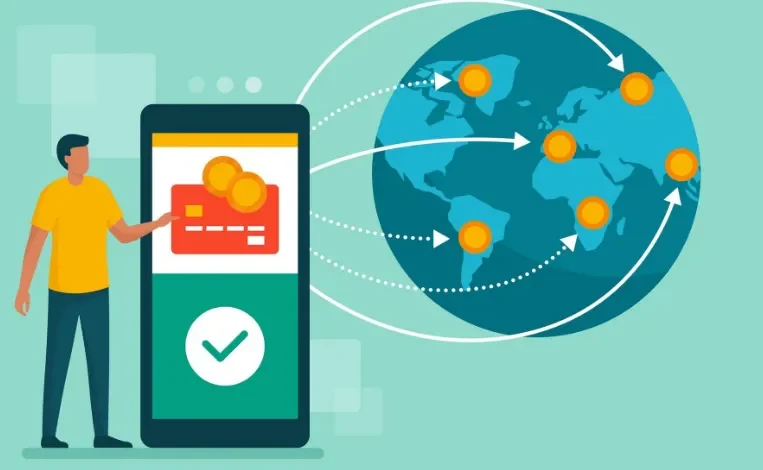Seamless Solutions: How Global Payments Technology Streamlines Business Operations

Contents
- 1 Key Takeaways:
- 2 Introduction to Global Payments Technology
- 3 The Impact of Integrated Payment Solutions
- 4 Enhancing International Commerce Through Payment Systems
- 5 Real-Time Processing and Financial Reconciliation
- 6 Streamlining Supply Chain Operations
- 7 Security and Fraud Prevention in Payment Technologies
- 8 Adaptation to Varying Market Regulations
- 9 Future Trends in Payments Technology
- 10 Conclusion: Embracing Technological Advancements in Payments
Key Takeaways:
- Global payments technology offers solutions that simplify complex financial processes, enhancing operational efficiency.
- Integrated payment systems bridge the gap between differing currencies and regulations, facilitating international commerce.
- Real-time transaction processing capabilities contribute to improved cash flow management and customer satisfaction.
Global payments technology has emerged as a linchpin for small-scale startups and multinational corporations in the ever-evolving digital landscape. Seamless payment systems have revolutionized customer transactions and streamlined varied business operations. This article delves into the transformative power of global payments technology and its pivotal role in enhancing operational efficiency across industries.
Introduction to Global Payments Technology
The cornerstone of modern global commerce is the ability to transact swiftly and securely across borders. Global payments technology is the infrastructure that supports this need by enabling businesses to process transactions in diverse currencies and comply with international regulatory standards. From small-scale artisans selling their crafts worldwide to conglomerates settling multi-million-dollar deals, the seamless transfer of funds is critical to maintaining the pace of business today.
The Impact of Integrated Payment Solutions
Integrated payment solutions are redefining the efficiency metrics for business operations. By streamlining transaction processing, these platforms allow businesses to accommodate multiple payment methods and currencies, all within a unified system. This consolidation reduces manual intervention, lowers the risk of errors, and provides a holistic view of the company’s financial health, leading to more informed strategic decision-making.
Enhancing International Commerce Through Payment Systems
International commerce thrives on the seamless execution of cross-border transactions. Advanced global payment systems, especially ones partnered with solutions like InComm Payment, offer businesses the technical resources to deal with the challenges of international trade. Such partnerships often provide access to a vast network of financial institutions, real-time foreign exchange data, and localized payment options — all crucial to expanding a brand’s global footprint.
Real-Time Processing and Financial Reconciliation
Real-time transaction processing is no longer a luxury — it’s a necessity. Businesses harnessing instant payment confirmations’ power benefit from improved cash flow visibility and customer satisfaction. This immediate payment assurance facilitates quicker product dispatch and service delivery. Additionally, once a time-consuming task, financial reconciliation is greatly simplified, with automated systems matching payments to invoices, reducing administrative burdens and freeing up valuable resources.
Streamlining Supply Chain Operations
Global payments technology is also a catalyst in optimizing supply chain procedures. Vendors and suppliers often require prompt service payments, and delays can disrupt the entire supply chain. Leveraging the capability of global payment platforms enables businesses to execute timely payments, favorably impacting inventory management, production schedules, and, ultimately, customer fulfillment cycles.
Security and Fraud Prevention in Payment Technologies
With the increasing prevalence of cyber threats, payment security has become a top business priority. Modern payment systems are fortified with advanced security features like encryption, tokenization, and fraud detection algorithms designed to safeguard transaction data. These protections not only build customer trust but also protect the business’s reputation and bottom line by mitigating the risks associated with financial fraud.
Adaptation to Varying Market Regulations
Every market has regulatory nuances; payment technologies help businesses navigate this complexity. By providing up-to-date compliance with the latest international payment regulations and tax laws, global payment technologies ensure businesses are adequately exposed to compliance risks, which could lead to fines or operational setbacks.
Future Trends in Payments Technology
The future of payment technology shines bright with innovations like blockchain, contactless transactions, and biometric authentication systems. These developments point towards an era of even faster, more secure, and more convenient payment methods. As these technologies gain traction, they promise to compress transaction times further, increase security, and personalize the payment experience.
Conclusion: Embracing Technological Advancements in Payments
As we gaze into the digital horizon, it is clear that global payment technology will continue to drive the efficiency and growth of businesses worldwide. Embracing these technological advancements opens the door to new markets and builds a framework for sustainable operations amidst a rapidly changing financial ecosystem. The transformative power of payment technologies lies in facilitating transactions and creating a more fluid, responsive, and interconnected global economy.




